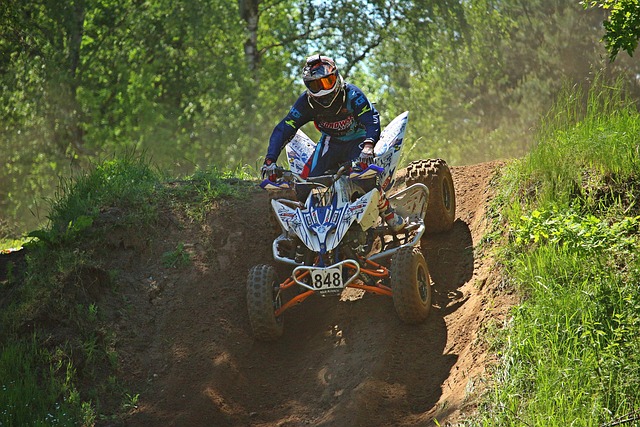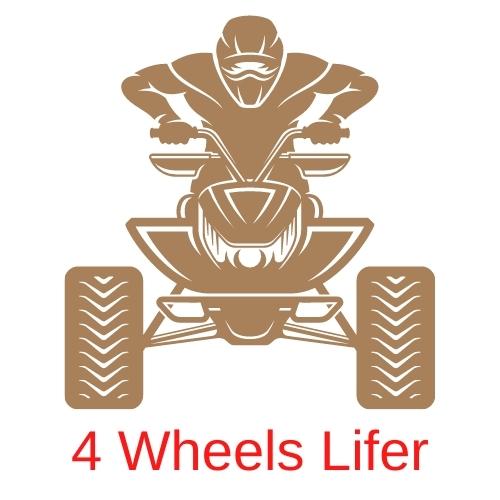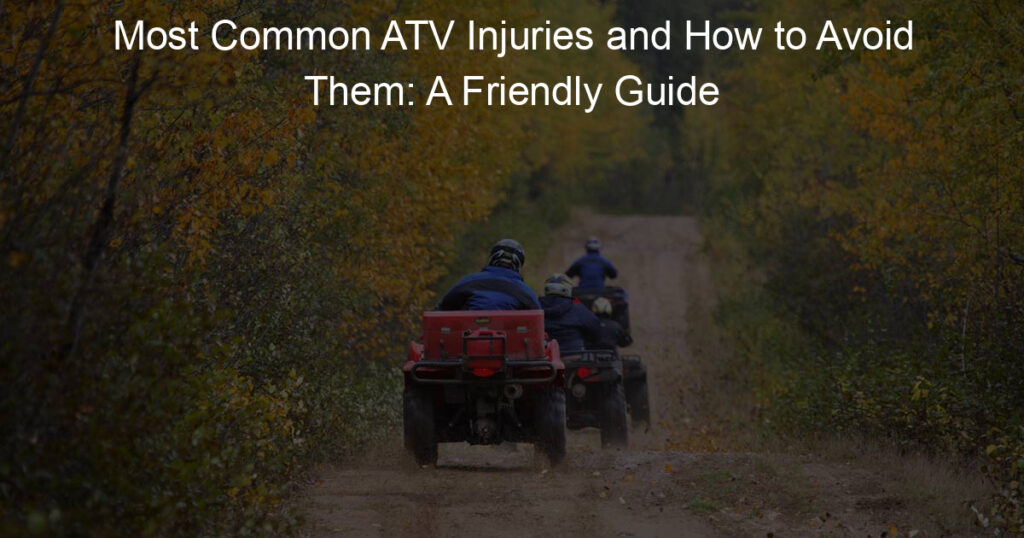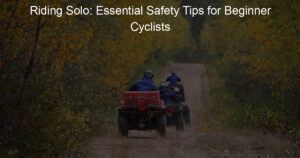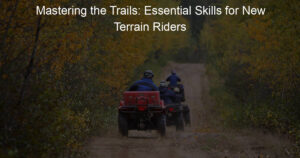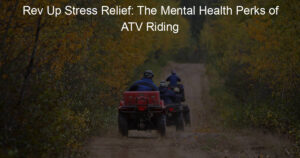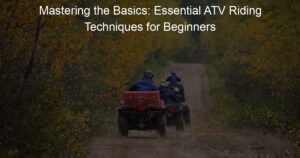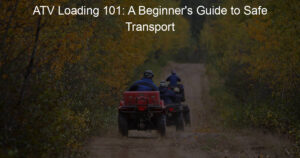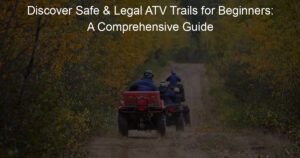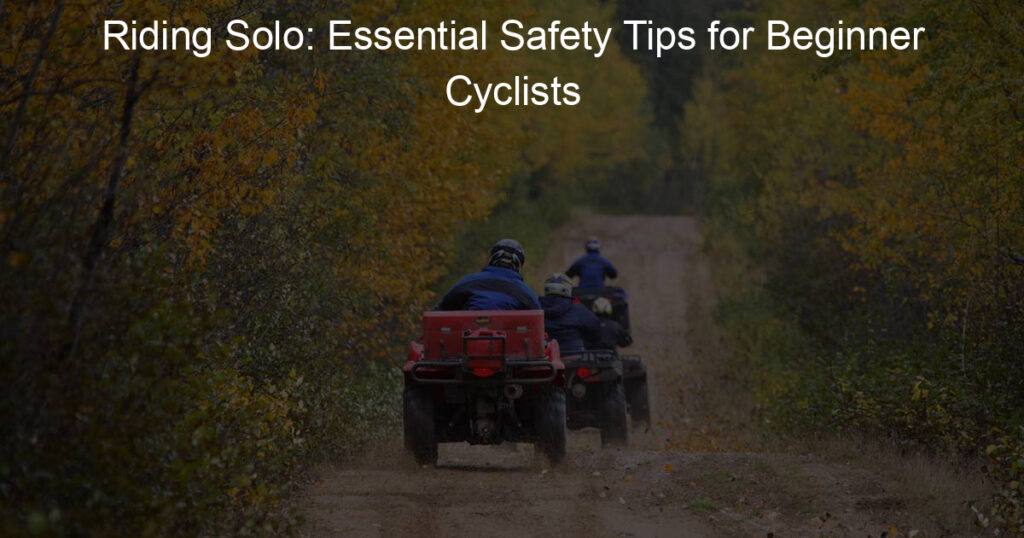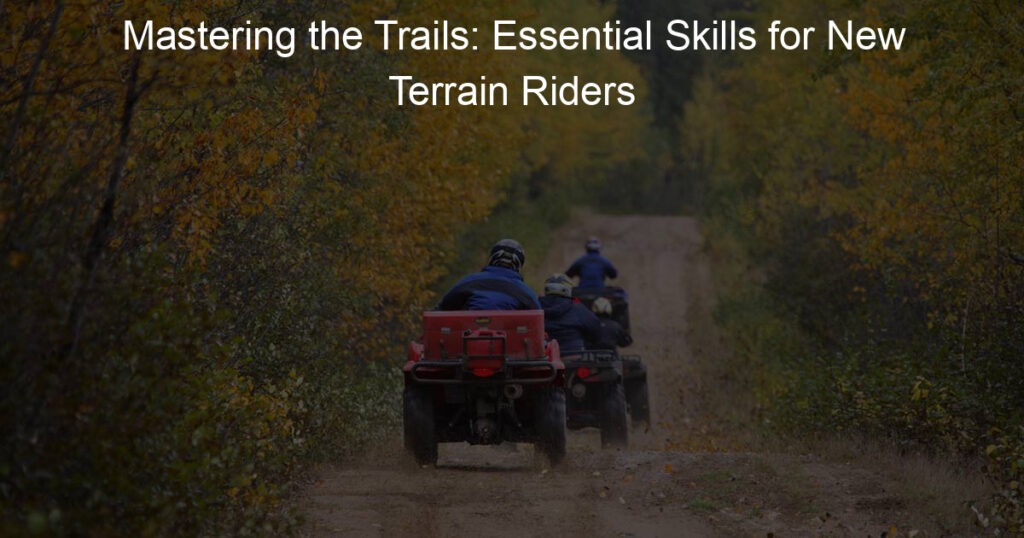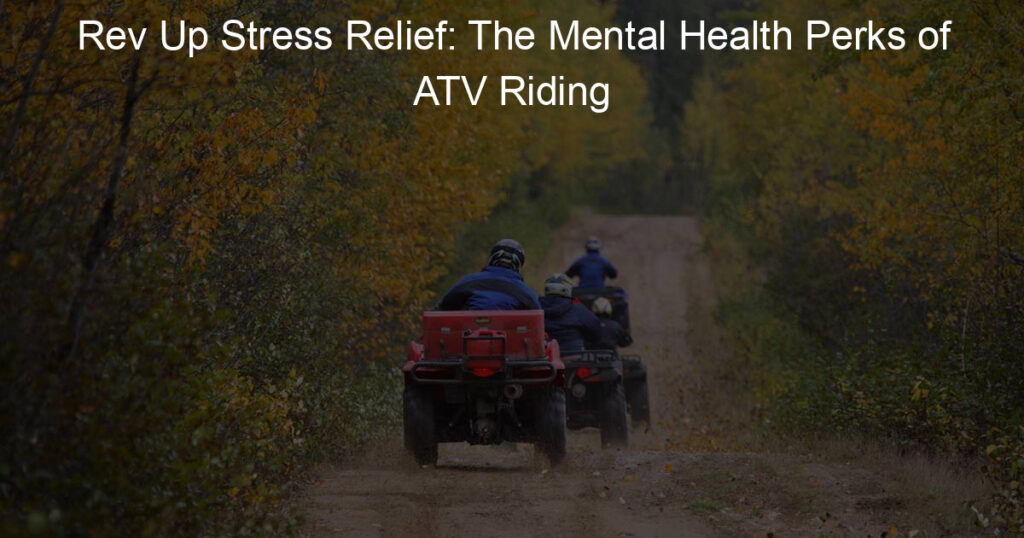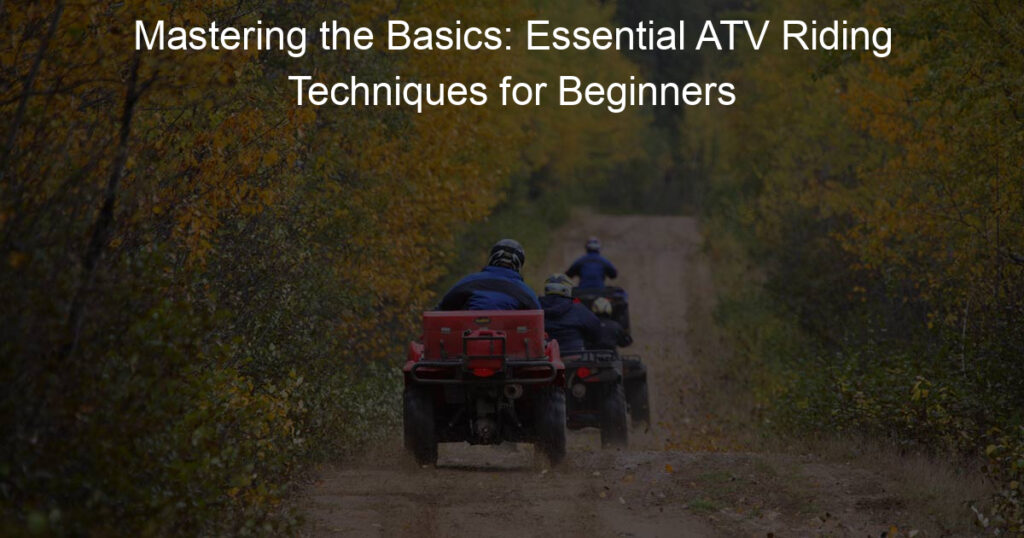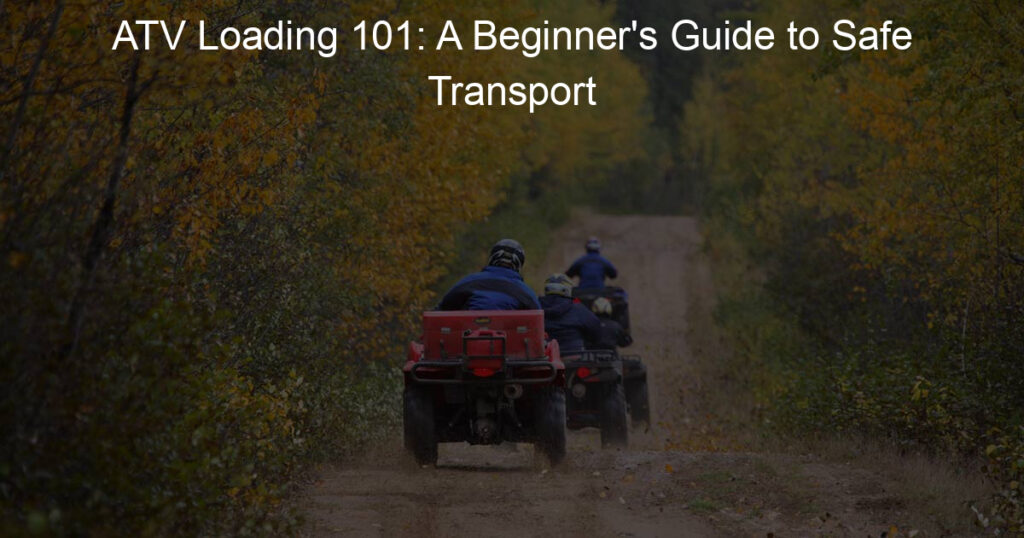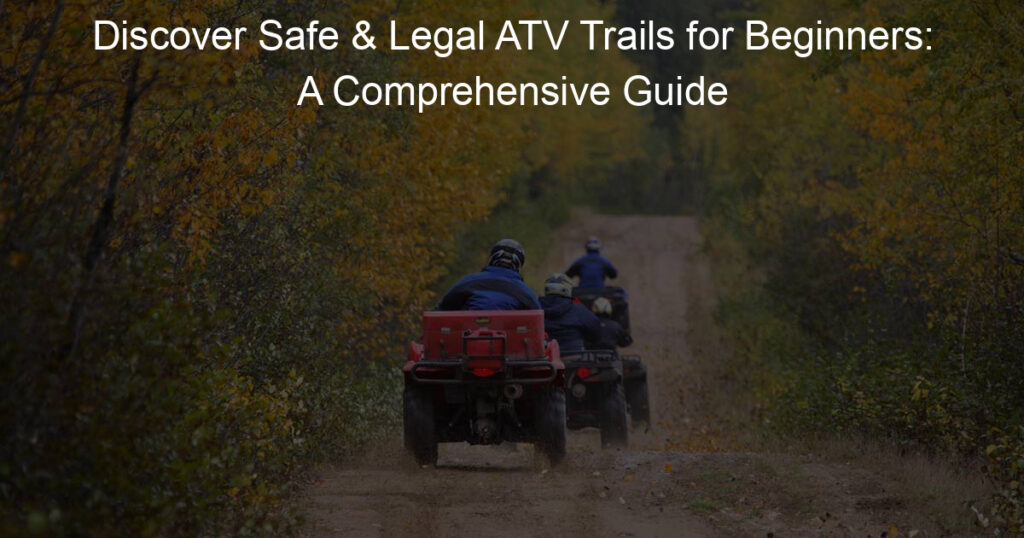ATV riding is a popular outdoor activity that offers an adrenaline-pumping experience. However, it’s no secret that riding these powerful machines can also come with some risks.
In this article, we’ll explore the most common ATV injuries and share tips on how to steer clear of them.
It’s essential to understand the potential dangers and risks associated with ATV riding. By having a solid grasp on the hazards, riders can better equip themselves to tackle the challenges they may face on the trails, ultimately leading to a safer and more enjoyable time.
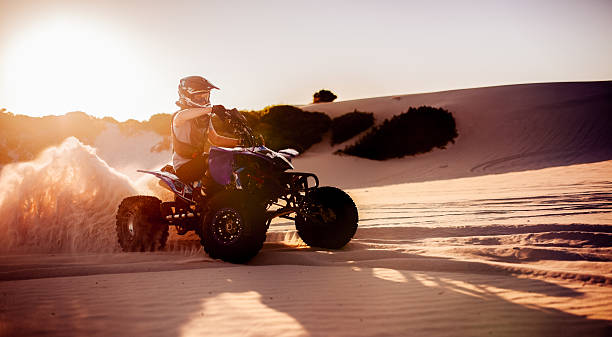
With the right knowledge and precautions, you can reduce the likelihood of injury and ride with confidence.
Key Takeaways
- Equip yourself with personal protective gear for a safe riding experience
- Recognize the common injuries associated with ATV riding and their treatments
- Implement steps to improve overall ATV safety and prevent accidents
Understanding ATV Injuries
Common ATV Injuries
As someone who loves ATVs, I’ve noticed that some common ATV injuries include fractures, dislocations, and sprains. These can occur when riding on uneven terrain or participating in high-speed activities.
Additionally, head and spinal injuries are quite common, especially when riders neglect to wear proper safety equipment like helmets.
Children and ATV Injuries
When it comes to children and ATV injuries, I’ve observed that the risks are even greater. Younger riders may lack the necessary skills to handle ATVs safely and are more likely to be involved in accidents.

Here are some key prevention tips for young riders:
- Always supervise children on ATVs
- Ensure kids ride age-appropriate ATVs
- Provide proper safety gear, such as helmets and protective clothing
- Educate them on safe riding practices
Injury Vs Death in ATV Accidents
I believe it’s essential to understand the severity of ATV accidents. While injuries can range from minor to severe, there’s also the risk of death. Research indicates that head and neck injuries are the leading cause of ATV-related fatalities.
To reduce the risk of fatal accidents, it’s crucial to:
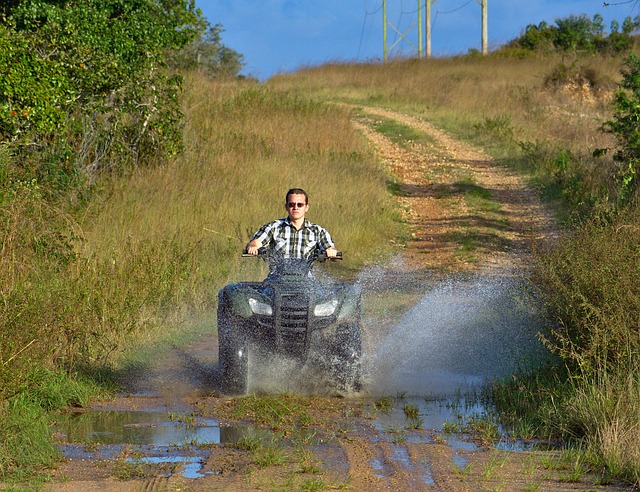
- Wear a helmet
- Avoid risky maneuvers
- Ride with a buddy (to provide assistance in case of an accident)
- Be aware of local laws and trail conditions
ATV Accidents and Trauma
As an ATV enthusiast, I acknowledge that accidents can happen despite our best efforts. ATV accidents might result in emotional and mental trauma in addition to physical injuries. It’s vital to seek professional help if anxiety, depression, or PTSD symptoms follow an ATV incident.
Don’t be afraid to reach out to friends, family, or mental health professionals for support.
Potential Dangers and Risks of ATV Riding
Impact of Speed and Skill
As an ATV rider, I know that speed can be thrilling but also dangerous. Riding at high speeds increases the chances of losing control, especially when we don’t have enough experience or skill.
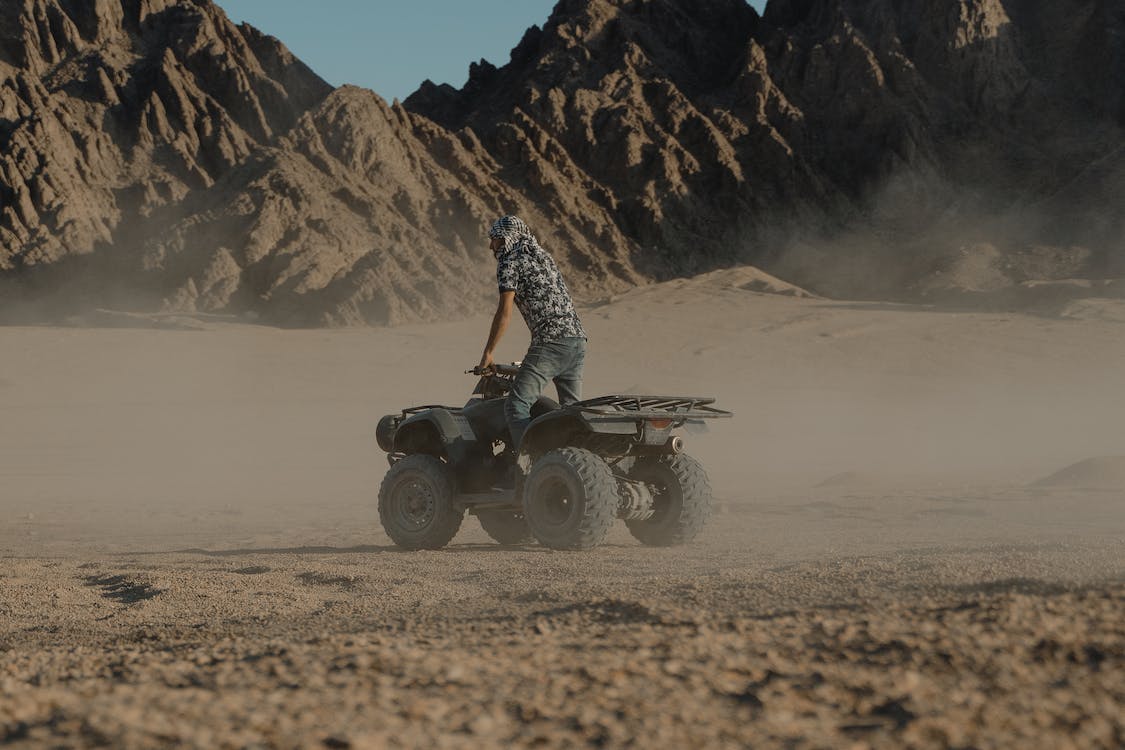
It’s important to ride within our skill level and always be aware of our surroundings.
Terrain and ATV Accidents
ATV accidents often happen due to the unpredictable nature of off-road terrain. Riding on rough terrain, such as rocky or slippery surfaces, can lead to tipping over, rolling, or sliding. It’s essential to always pay attention to the terrain and adjust our riding style and speed accordingly.
Also, avoiding paved roads is highly recommended, as they can be extremely slippery and dangerous for ATVs.
- Rocks and uneven surfaces: Pay extra attention and reduce speed when riding on rocky surfaces or in areas with loose gravel.
- Muddy or slippery terrain: Use caution and maintain a slower speed to avoid sliding or getting stuck.
Risks for Passengers
Carrying passengers on an ATV that is not designed for multiple riders can increase the risk of an accident. Extra weight may affect the stability and balance of the vehicle, making it harder to control.
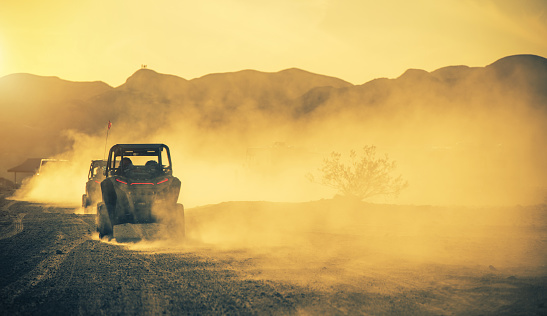
If we need to transport additional passengers, it is crucial to use an ATV designed for carrying multiple riders safely.
Alcohol and ATV Accidents
Combining alcohol and ATV riding is a dangerous mix, as alcohol impairs our judgment, slows reaction time, and reduces coordination. Regardless of our skill level, riding an ATV under the influence is a huge risk.
Always remember to ride sober to avoid putting ourselves and others in danger.
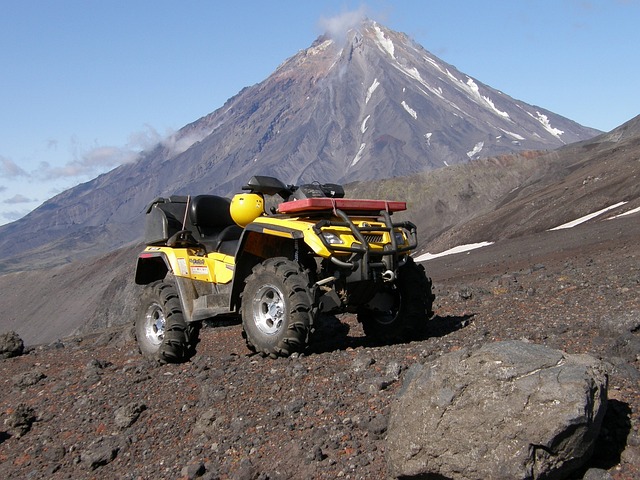
Personal Protective Gear and its Importance
When I’m riding my ATV, I make it a priority to wear proper protective gear. This ensures my safety and reduces the risk of injury.
In this section, I’ll talk about why wearing protective gear is important and provide some suggestions on what to wear.
Helmet Safety
Wearing a helmet is an absolute must when riding an ATV. The helmet is the most important piece of protective gear, as it helps prevent head injuries in case of an accident. I make sure to choose a helmet that is certified by the Department of Transportation (DOT) or Snell Memorial Foundation.
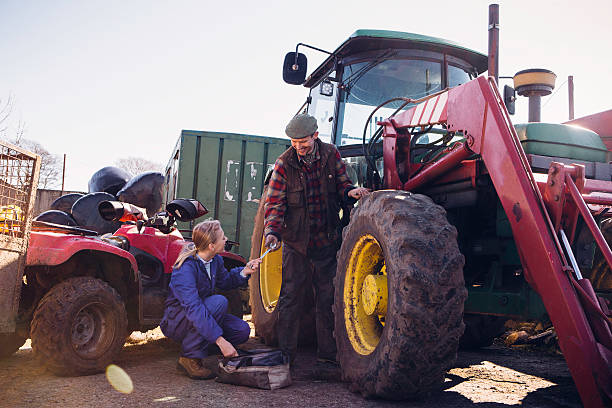
This ensures that my helmet meets the highest safety standards.
Eye Protection
Protecting my eyes is essential when riding an ATV, as debris and dust can cause irritation or even injury. I wear goggles or a face shield to keep my eyes safe from any foreign objects.
Ensuring proper fit and ventilation are important factors when choosing eye protection.

Use of Gloves and Boots
My hands and feet are also vulnerable when riding an ATV. I wear gloves to protect my hands from potential cuts, abrasions, or blisters caused by handlebar vibrations. I also use boots with ankle support to keep my feet secure and prevent injury when navigating rough terrain.
- Gloves: I prefer ones with reinforced palms and knuckles
- Boots: I look for sturdy, off-road boots with good traction
Role of Long Pants and Long-Sleeved Shirts
In addition to helmets, eye protection, gloves, and boots, wearing long pants and a long-sleeved shirt can help protect my skin from scratches, scrapes, or sunburn. I opt for durable, breathable materials to ensure comfort during my rides. This also helps prevent debris from entering my clothing and causing discomfort.
Common ATV Injuries and Their Treatment
As an ATV rider, I’m well aware that accidents can happen and injuries are quite common. In this section, I’ll discuss some of the most common injuries and their treatments. We will cover the treatment of concussions, dealing with lacerations, fixing fractures, and recovering from bruises.
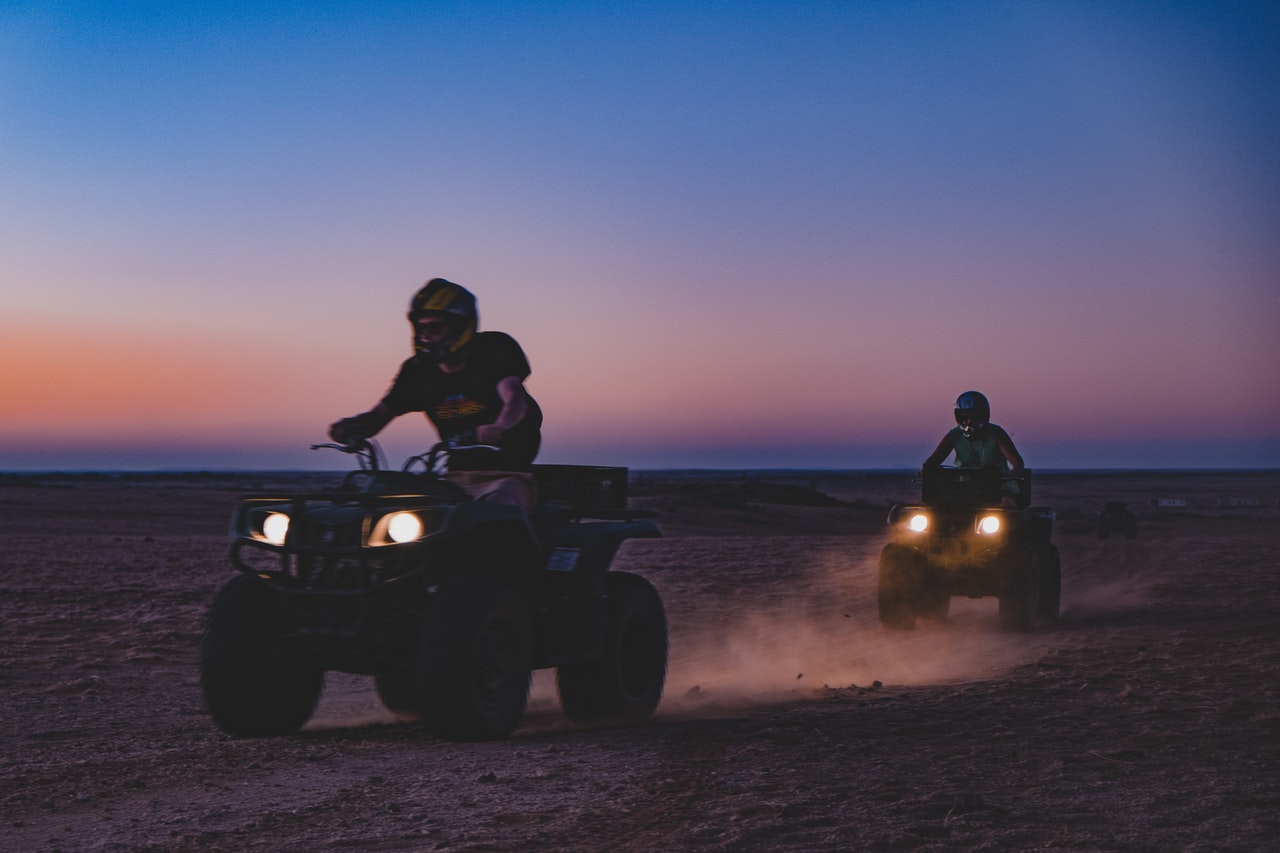
Remember to always consult your medical professional for advice on proper treatment.
Treatment of Concussions
A concussion is a type of traumatic brain injury caused by a bump, blow, or jolt to the head.
When I suspect I’ve experienced a concussion, I try to remember the RICE method, which stands for:
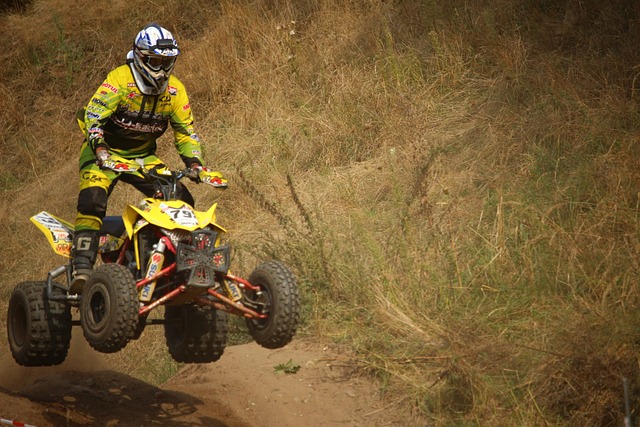
- Rest — Resting is crucial for the brain to heal.
- Ice — Applying ice to the head can help reduce swelling.
- Compression — A gentle compression wrap can provide support for a headache.
- Elevation — Keep the head slightly elevated to reduce swelling.
If I experience symptoms like dizziness, vomiting, or severe headache, I’ll seek immediate medical care from an emergency department.
Dealing with Lacerations
Lacerations or cuts from ATV accidents can range from mild to severe.
When I have a mild laceration, I always follow these steps:
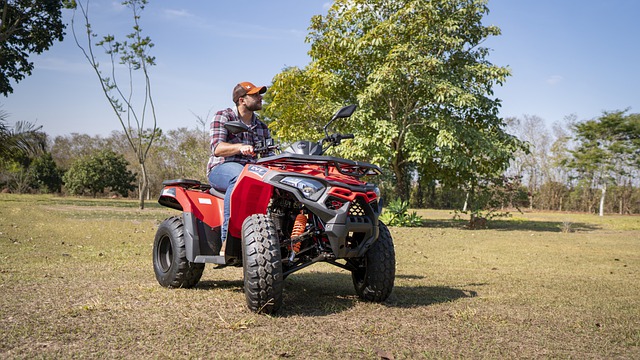
- Clean the wound with mild soap and water.
- Apply an antibiotic ointment to prevent infection.
- Cover the wound with a sterile bandage.
- Change the bandage daily until the wound is healed.
For deep or severe lacerations, I’ll seek medical attention immediately, as sutures may be required.
Fixing Fractures
Fractures can occur during ATV accidents, especially in extremities like arms and legs.
If I suspect a fracture, I take the following immediate actions:
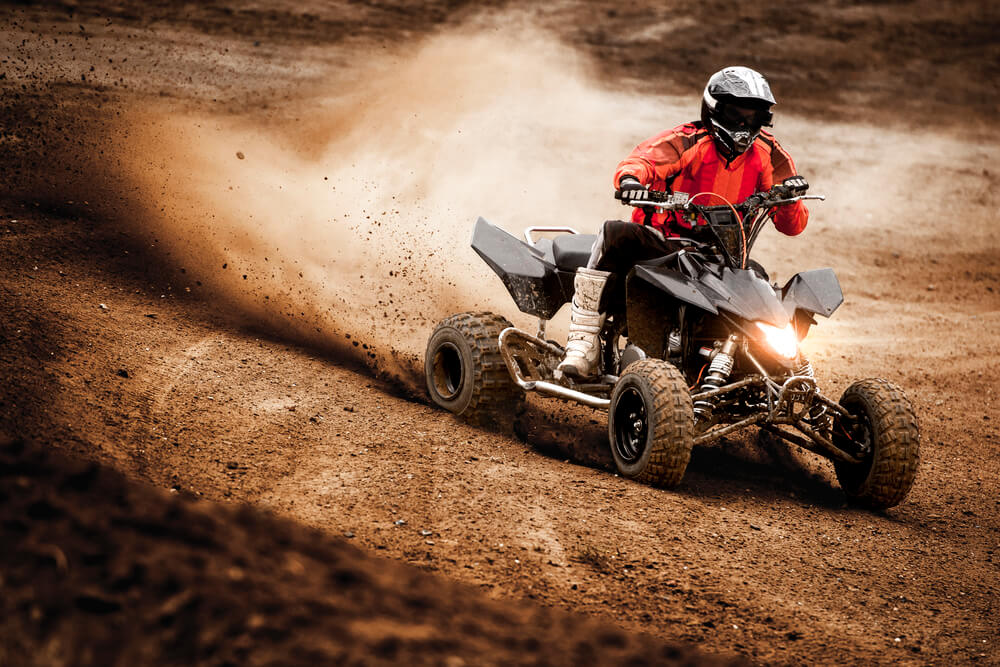
- Immobilize the injured area using a splint or any available material.
- Apply ice to reduce swelling.
- Keep the injured area elevated, if possible.
After taking these initial steps, it’s essential to get to an emergency department for proper diagnosis and treatment.
Recovering from Bruises
Bruises are a common result of minor bumps and falls during ATV use. To manage my bruises, I usually do the following:
- Apply a cold compress to the bruised area for 20 minutes at a time during the first 48 hours.
- Gently massage the area with my fingertips to improve blood circulation and reduce pain.
- Keep the bruised area elevated to minimize swelling.
Finally, it’s essential to monitor the injury closely. If the bruise worsens or if the pain becomes unbearable, I’ll consult my medical professional for further advice.
Steps to Improved ATV Safety
ATV Safety Tips
In my experience, one of the best ways to avoid serious injuries while enjoying ATV riding is to follow a set of safety tips.
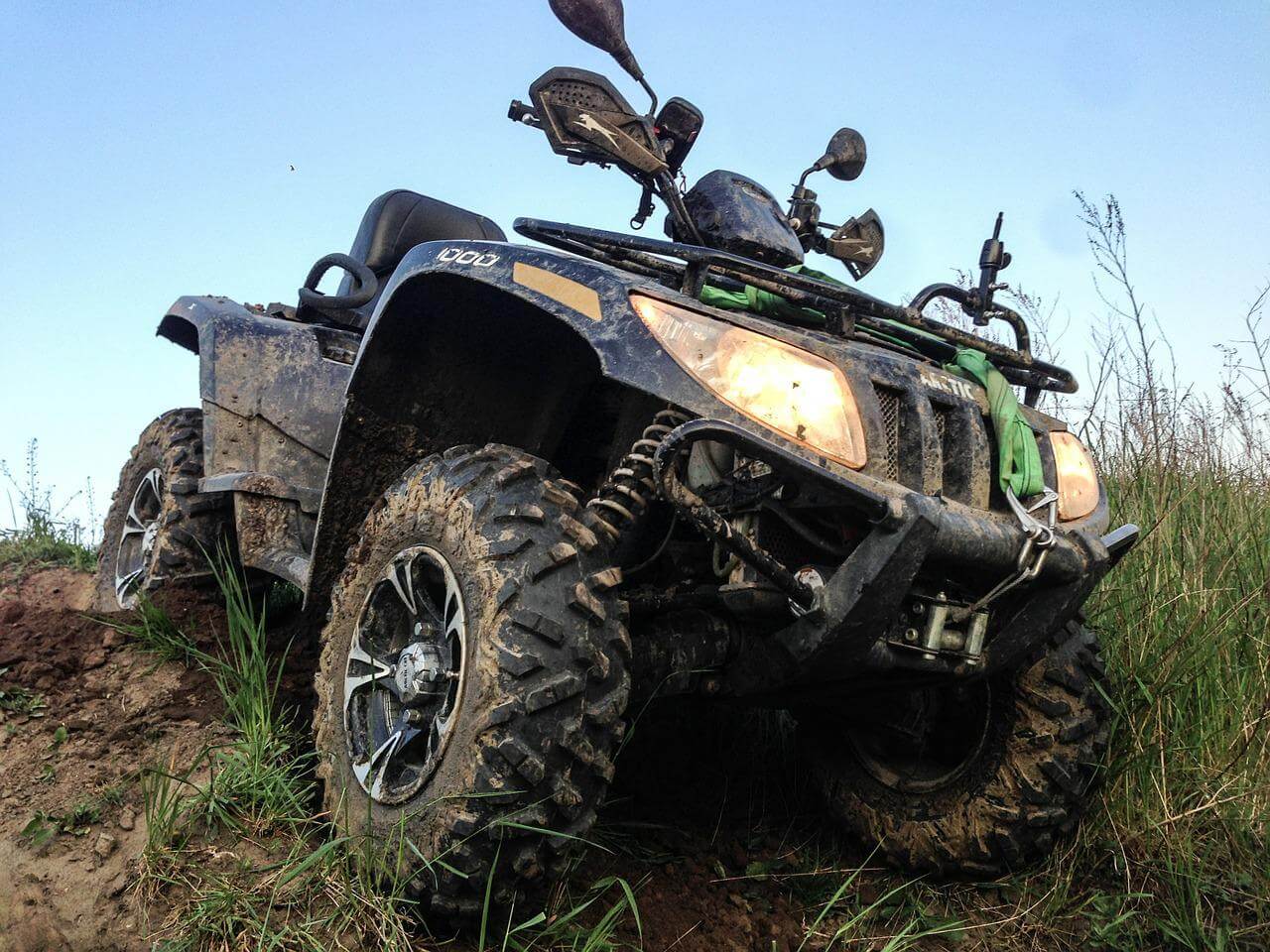
Here are some useful guidelines:
- Wear a helmet: A crucial precaution for any ride, wearing a helmet can help prevent traumatic brain injuries.
- Ride at a safe speed: I always maintain a reasonable speed to keep control of my ATV and avoid accidents.
- Rest when needed: Taking breaks during the ride helps me stay refreshed and maintain good judgment.
- Bring a phone: Carrying a phone with me allows me to communicate with others and call for help in case of an emergency.
Teaching Children to Ride Safely
When it comes to kids, it’s essential to take special precautions for their safety. I always make sure to:
- Teach them basic ATV safety tips
- Supervise them while riding
- Start them on smaller ATVs or dirt bikes appropriate for their age
- Ensure they wear proper safety gear
Hands-On Training and Education
I’ve found that hands-on training with a qualified instructor is a great way to learn essential safety skills.
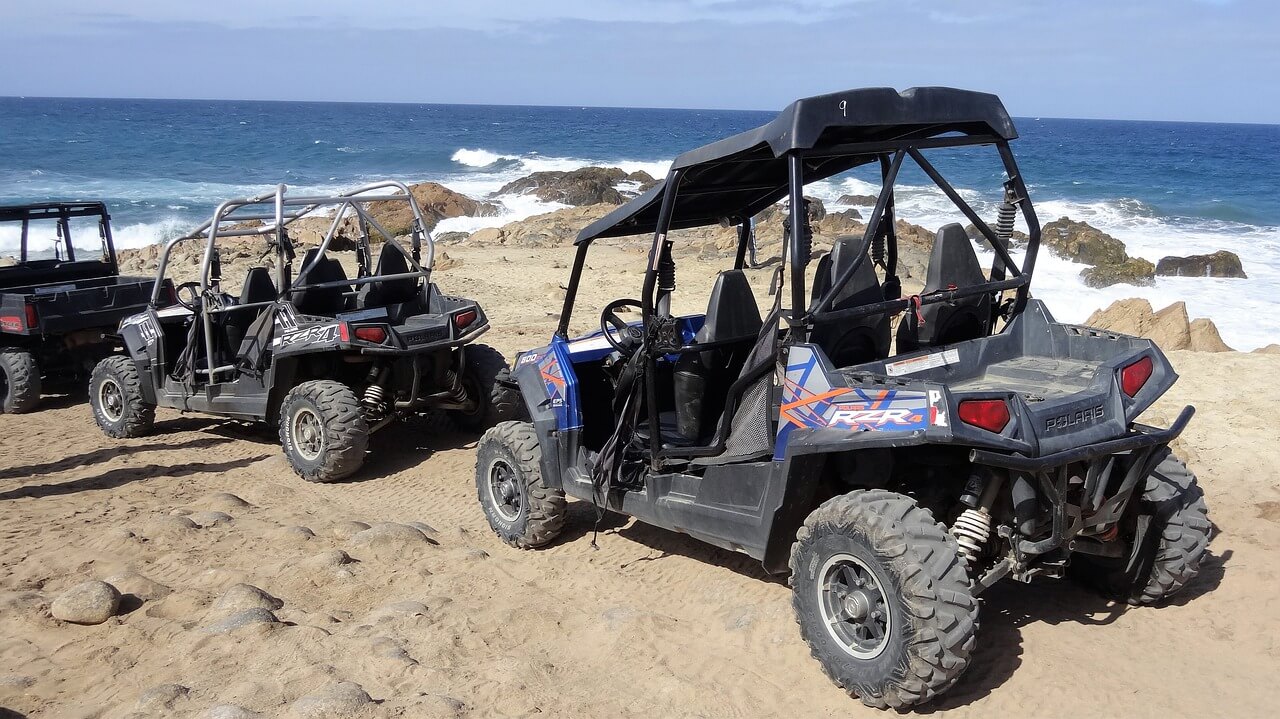
These courses often cover:
- Pre-ride inspection
- Proper riding techniques
- Emergency response
- Basic maintenance
This type of safety training can prevent accidents, spinal cord injuries, and other severe consequences.
Laws and Regulations for ATV Use
Lastly, following the laws and regulations governing ATV use is critical in preventing accidents and ATV-related injuries.
Some key aspects include:
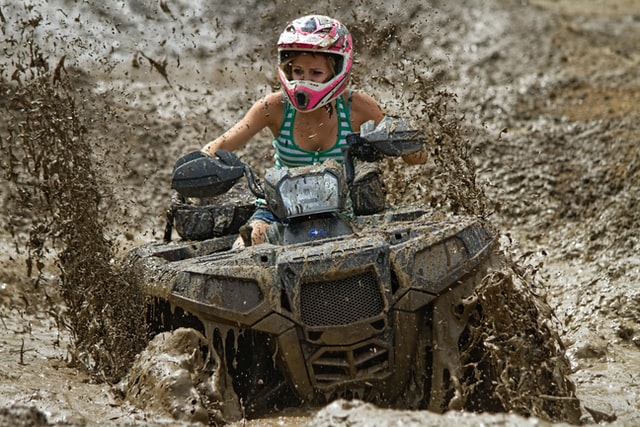
- Licensing requirements
- Age restrictions
- Designated ATV trails and areas
- Required safety equipment
By staying informed of the regulations in my area and adhering to them, I can ensure a safe and enjoyable ATV riding experience.
Conclusion: How to Ride an ATV Safely
As an ATV rider, I understand the importance of safety when going off-road. To avoid common injuries such as scrapes and abrasions, I recommend wearing proper protective gear. This might include helmets, goggles, gloves, and sturdy boots.
In case of an accident, wearing the right safety gear can make a huge difference in preventing severe injuries.
Furthermore, I always make sure to maintain my ATV and keep a toolkit handy to address any mechanical issues that might arise. This not only ensures a smooth ride but also minimizes the risks of accidents.
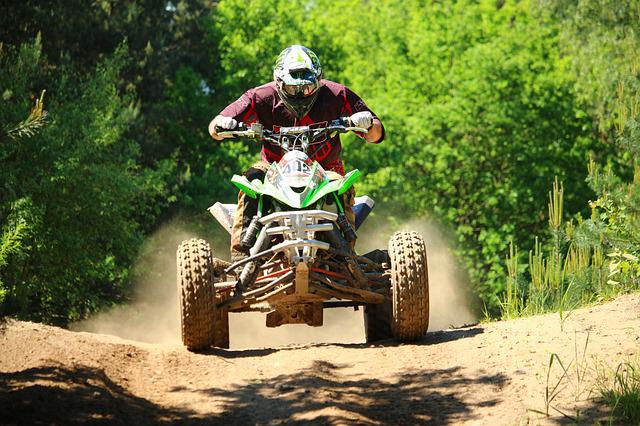
Moreover, staying within the limits of the vehicle’s capacity and following all safety guidelines will contribute to a safer riding experience.
In conclusion, prioritizing safety, wearing the appropriate protective gear, and being prepared for any potential mishaps can lead to an enjoyable and injury-free ATV adventure.
As riders, it’s our responsibility to make safety an integral part of our off-road experience.
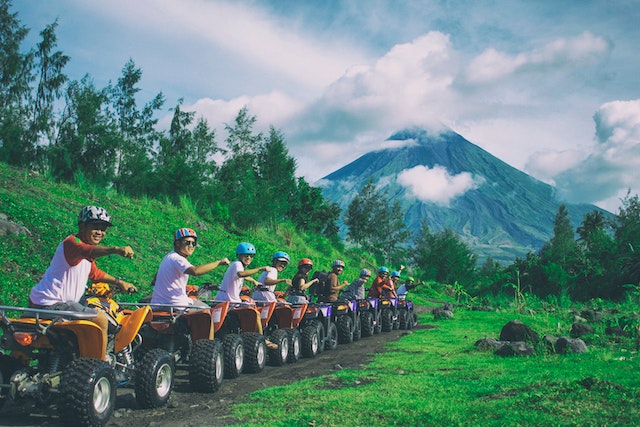
Frequently Asked Questions
What actions can help prevent ATV injuries?
To prevent ATV injuries, I always follow these guidelines: wear a properly fitted helmet, avoid carrying passengers unless the ATV is designed for it, take an ATV safety training course, and always supervise inexperienced ATV riders.
Which body position is best for low speed turns?
During low-speed turns, I find it helpful to lean slightly into the turn while keeping my feet firmly on the footrests. This helps to maintain balance and control, allowing for a smoother and safer ride.
How to handle an ATV tipping during a turn?
If I feel that my ATV is tipping during a turn, I immediately lean my body in the opposite direction of the tipping side while keeping both hands on the handlebars and feet on the footrests.
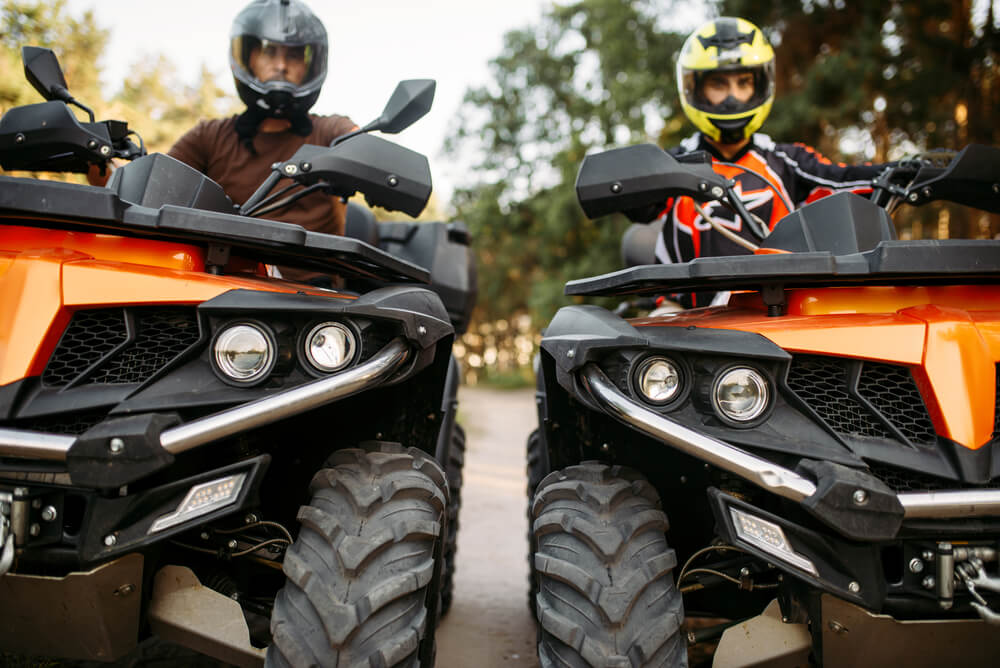
By shifting my weight, I can counterbalance the tipping force and regain control.
What is the recommended formation when riding in a group?
When riding in a group, I follow the staggered riding formation. This means maintaining a safe distance from the rider in front while positioning myself slightly to the left or right.
This formation ensures better visibility, reduces the chance of collisions, and allows for easier communication among riders.
Who is at the highest risk of injury on ATVs?
Based on my observations, those at the highest risk of injury on ATVs include inexperienced riders, individuals not wearing proper safety gear, and riders under the influence of alcohol or drugs.
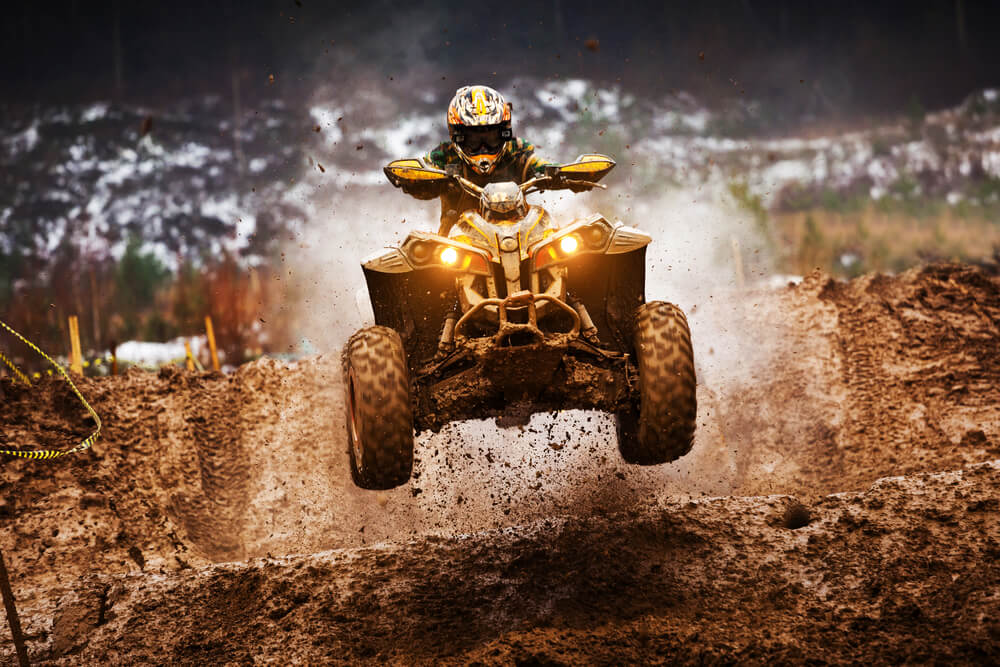
Taking proper precautions, following safety guidelines, and riding responsibly can help mitigate these risks.
What are some risks associated with operating ATVs?
Some common risks associated with operating ATVs are rolling or tipping over, collisions with other vehicles or obstacles, and injuries from improper gear or body positioning.
By adhering to safety guidelines and maintaining awareness, I can minimize these risks and enjoy a safe and fun ATV ride.
